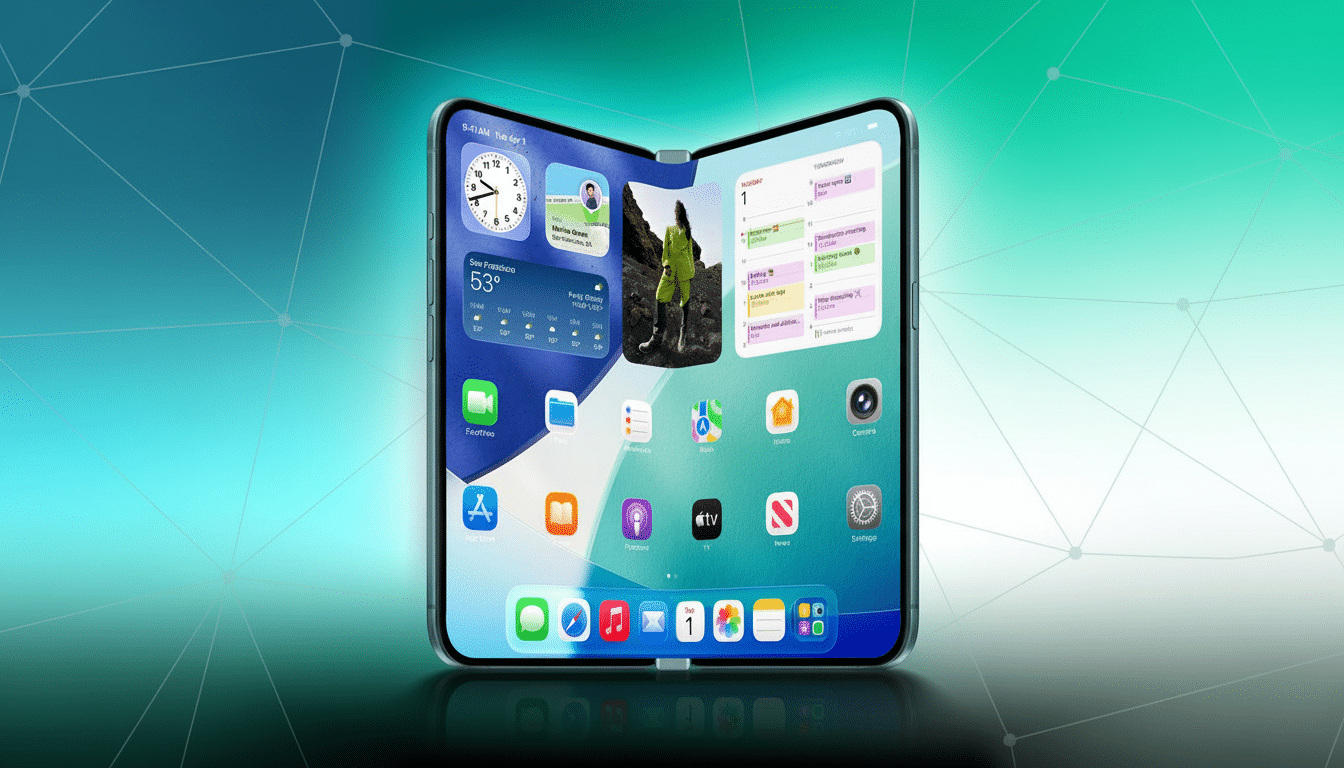Apple’s first foldable iPhone may have much more battery capacity than the next two models of the Samsung Galaxy Z Fold. If true, the iPhone Fold would come with a 5,400 to 5,800mAh cell — far beyond the widely tipped 4,400mAh unit for the Z Fold 7 and possibly even larger than the Z Fold 8, which Korean media rumors suggest could at long last surpass 5,000mAh.
The claim is stunning and unverified, so take it with a grain of salt.

But it does point to a strategic area of competition where Apple may look to separate itself: all-day battery life on big internal screens that stress even the most robust flagships.
What the leak claims about iPhone Fold battery sizes
The tip comes courtesy of Korean blogger Yeux1122, who claims that Apple is testing multiple battery sizes for the iPhone Fold, with capacities ranging from 5,400mAh to up to 5,800mAh. The implication being that, if it needs to be marginally thicker or heavier, so be it—Apple will just go up on capacity. The blogger’s sourcing is murky, so consider this early-stage chatter—not settled fact.
Still, the numbers are attention-grabbing. To put this into context, the iPhone 15 Pro Max contains an approximately 4,422mAh battery, yet Apple has been known to deliver top-of-the-line battery life from rather low-capacity sizes thanks to well-optimized hardware–software coupling and highly efficient silicon. A near-6,000mAh foldable would be the largest phone battery that Apple has offered to date.
How it compares to Samsung’s Galaxy Z Fold lineup
Recent generations of Samsung’s Fold have stayed around the 4,400mAh mark, from the Z Fold 3 right up to the Z Fold 6. Industry gossip suggests the Z Fold 7 will continue to offer that capacity, with a separate Korean report claiming the Z Fold 8 would finally edge above that figure and go beyond 5,000mAh. Should Apple hit 5,400mAh or above, the iPhone Fold would win on paper.
For comparison, up against wider competition, Apple’s rumored capacity would outclass the 4,805mAh battery within the OnePlus Open and the 4,821mAh pack in the Pixel Fold. Both those devices offer solid battery life as well, but they still struggle with the core challenge of running a tablet-size inner display. Additional headroom could potentially result in mixed-use runtimes that are a bit longer (i.e., during multitasking and video playback), however.
Why a bigger battery cell matters for modern foldables
Foldables have to balance two powerful screens, complicated hinge mechanisms, and—in many cases—higher peak brightness goals. The inner panel alone can be a battery suck, particularly with high refresh rate LTPO and productivity features that have both displays running constantly. For a lot of owners, battery life is the make-or-break experience—it’s the difference between having something that feels like a *real* laptop-lite versus something that you find yourself pining for ’til midday top-up.

In the past, it’s led to real-world wins against similarly sized Android competitors, Apple’s toolkit (custom power management silicon optimized at the iOS level, placing traditionally efficient A-series chips) notwithstanding. Paired with a bigger battery, those gains could be augmented, potentially offering more hours of screen time than current foldables under similar workloads.
The trade-offs Apple must navigate with larger batteries
Big batteries aren’t free. The foldable form factor can split the cell between the two halves of a chassis, complicating thermal treatment and mechanical support. Extra capacity means extra grams, and with devices already sitting in the range of c. 240–280g, all in, additional weight is soon apparent. For comparison, the Pixel Fold is around 283g and the OnePlus Open reduces that to around 239g with a further development of its stacked battery along with lightweight materials.
The iPhone Fold design that’s reportedly being considered would tend toward a “squat” aspect ratio like the Oppo Find N series and Pixel Fold offer, which could allow for a little less perceived thickness when folded closed and help with ergonomics in one-handed use. But by the same token, it means Apple is juggling battery size with hinge integrity, display crease mitigation, and heat dissipation—especially if it goes for a brighter, crease-varnished inner panel and such features as an under-display selfie camera.
What to watch next as iPhone Fold battery rumors evolve
The battery story remains speculative until better sourcing comes along—’til then, there are no confirmed details beyond the earlier ones in this post, and at this point it’s all reading tea leaves.
Even so, the rumor fits into a broader trend: As foldables grow up, battery capacity and efficiency are now also the primary differentiators—not afterthoughts.
Should Apple prioritize endurance, it may also set the pace for a new generation of book-style foldables, forcing competitors to up their game with bigger cells, better energy density, or more aggressive system optimizations. And if the iPhone Fold does have a 5,400–5,800mAh battery (or higher), not only is it Apple’s biggest ever—it may reset the bar for the category.

